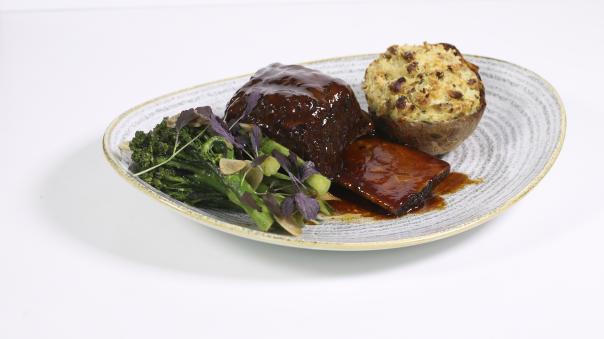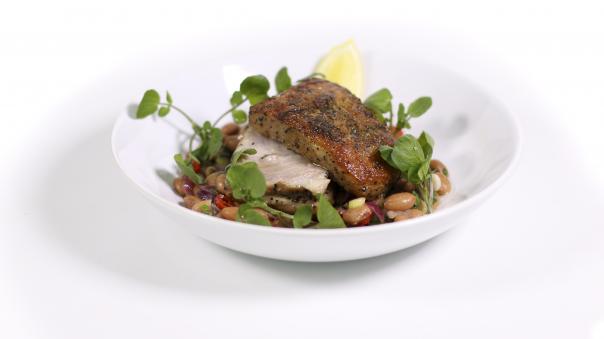


Slow cooked food, cooked fast, sounds like a paradox but food innovators are doing just that by developing ways to pre-cook meat slowly and freezing it, ready for chefs to reheat and offer high quality, slow cooked dishes in minutes.
Food distributor Brakes joined forces with leading chef-restaurateur, Mark Sargeant, this week to show how dishes are easy to serve if the meat has been pre-cooked slowly, bagged and frozen, so chefs only need to reheat and serve with their signature finishes.
Brakes category manager Louise Hatch says the business has been focusing on slow cooking for some time and is a big trend with its customers.
She says the UK slow cook market, worth £168m, has seen American cuisine particularly playing a big part in raising its profile, with Brits looking for more US-style slow cooked food such as pulled meat and barbecue dishes, while the MCA Menu & Food Trends Report 2017 shows ‘slow cooked’ fifth in the top 10 most common cooked methods on menus.
Brakes’ range, cooked for between six to eight hours to tenderise the meat, emulates current trends – provenance, “telling a story”, traditional and novel flavours – and offers portion control and consistency. Above all, the products save time, as Hatch says: “Who has six hours to spare to slow cook?”
Sargeant demonstrated six main courses, step-by-step, at Brakes’ development kitchen in London, showing how being slowly pre-cooked saves time and how this cooking technique brings out the flavour and aroma of meat infused with herbs, spices and marinades.
“These slow cooked products offer wonderful quality and consistency, and help chefs come up with a dish to be proud of,” he comments, adding that the dishes he was focusing on were for “dark nights” and therefore feature bold flavours and heavier garnishes.
British outdoor reared pork belly marinated in olive oil, sea salt, cracked black pepper and fresh thyme, needed few elements to complement the dish – pan-fried to get crispy fat on top, and popped into the oven while quickly preparing a borlotti bean stew to accompany it.
Short Jacob’s ladder beef rib with salt and pepper features on Sargeant’s menu at his RockSalt restaurant in Folkestone. Now served with a barbecue glaze, half a jacket potato accompanied it – with the hot potato mashed with an egg yolk for a creamier filling and crisped on top – plus broccoli.
Brakes’ insight showed that ‘smoky and woody meat, bitter sweet veg and herby additions’ were on trend, and this was highlighted by orange wood smoked pork belly slices with coriander, orange glazed carrots and buttery kale.
Other dishes included lamb shoulder cooked in the bag with just salt and pepper to bring out the meat’s flavour, served with a simple vegetable broth, while feather-blade of beef cooked in red wine, garlic and thyme, with flavoursome jelly fat, was accompanied by crunchy, spicy wedges, and red cabbage made to Sargeant’s own recipe, which included red cabbage, demerara sugar, butter, malt vinegar and salt.
He described pressed beef with caramelised onion and seasoning as a “classic old school, wintry dark night dish”, and best sealed in the pan before being oven heated. Primped with a touch of glaze, he served it with half a roasted red onion, carrots cooked in carrot juice, kale and a dollop of mashed potato flavoured with horseradish sauce. Just by scoring the top of the mash for the gravy to ooze into adds an extra £1 to the price, says Sargeant.
“Restaurants need to be savvy to make money and keep customers happy – clever ideas like this make them feel they are getting incredible value for money,” he explains.